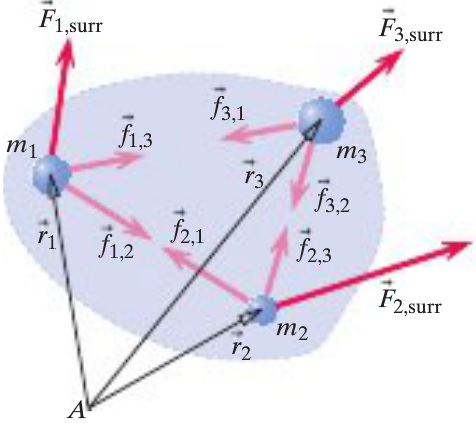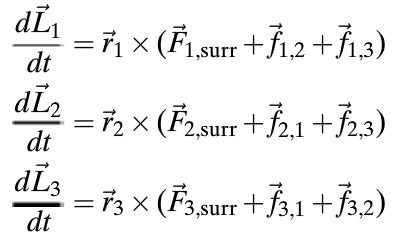Angular Momentum of Multiparticle Systems
The angular momentum principle may be extended to a multiparticle system to provide various insights.
The Main Idea
A Mathematical Model
The derivation of the angular momentum principle of a multiparticle system is most easily understood when following a simple a simple example, in this case we will work with a three particle system:
- The angular momentum principle is written for each individual particle relative to location A, with position vectors r and external force vectors F.
- The individual equation is then summed. Note that, due to the reciprocation of forces, the internal forces f cancel out.
A Computational Model
How do we visualize or predict using this topic. Consider embedding some vpython code here Teach hands-on with GlowScript
Examples
Be sure to show all steps in your solution and include diagrams whenever possible
Simple
Middling
Difficult
Connectedness
- How is this topic connected to something that you are interested in?
- How is it connected to your major?
- Is there an interesting industrial application?
History
Put this idea in historical context. Give the reader the Who, What, When, Where, and Why.
See also
Are there related topics or categories in this wiki resource for the curious reader to explore? How does this topic fit into that context?
Further reading
Books, Articles or other print media on this topic
External links
References
This section contains the the references you used while writing this page


